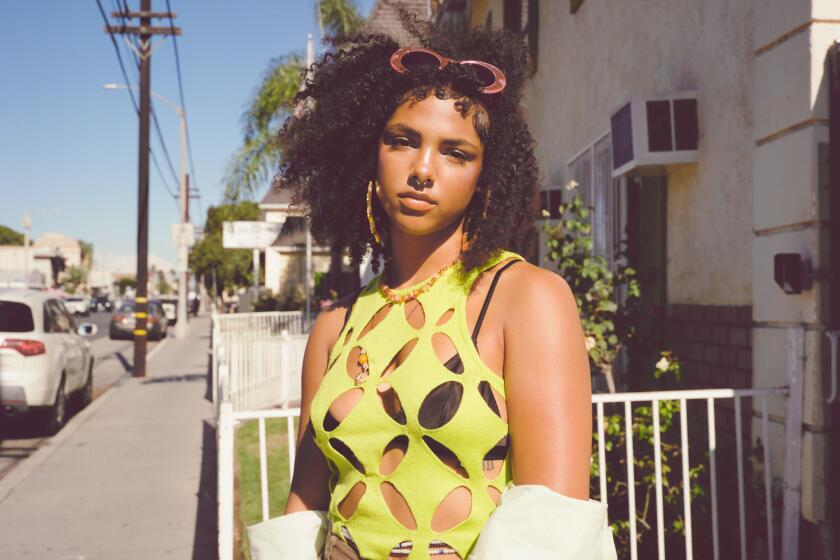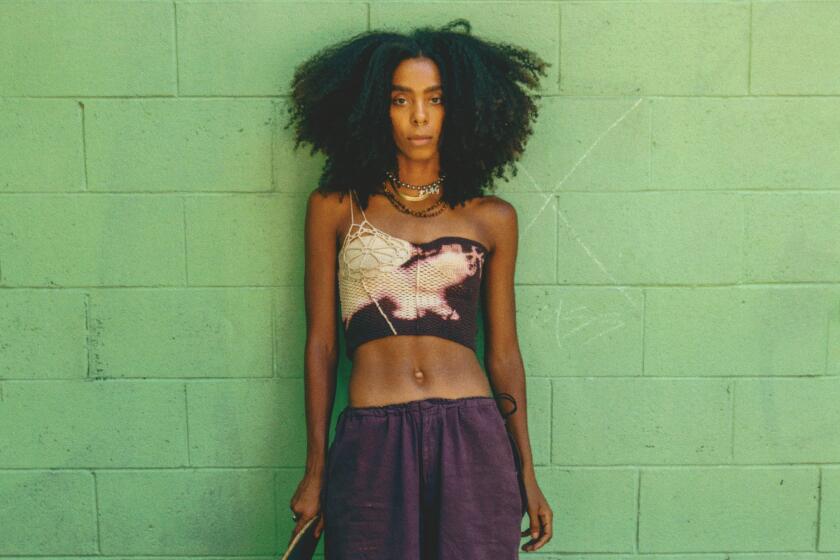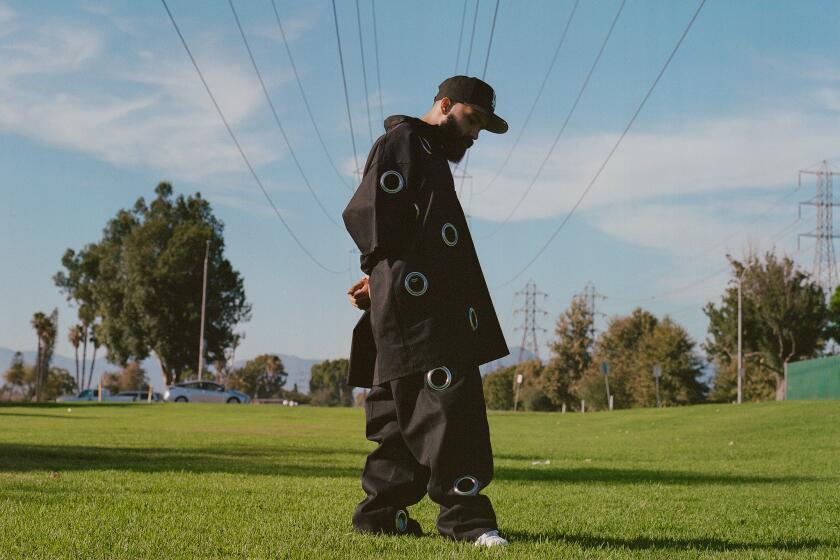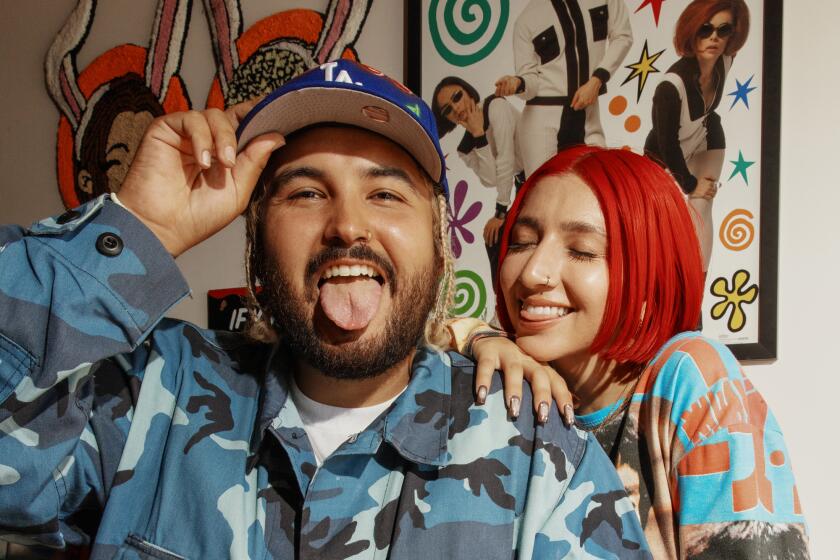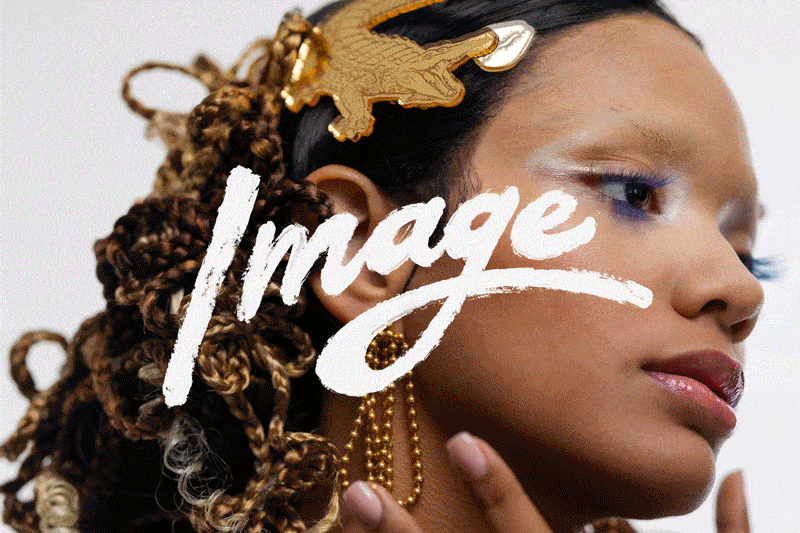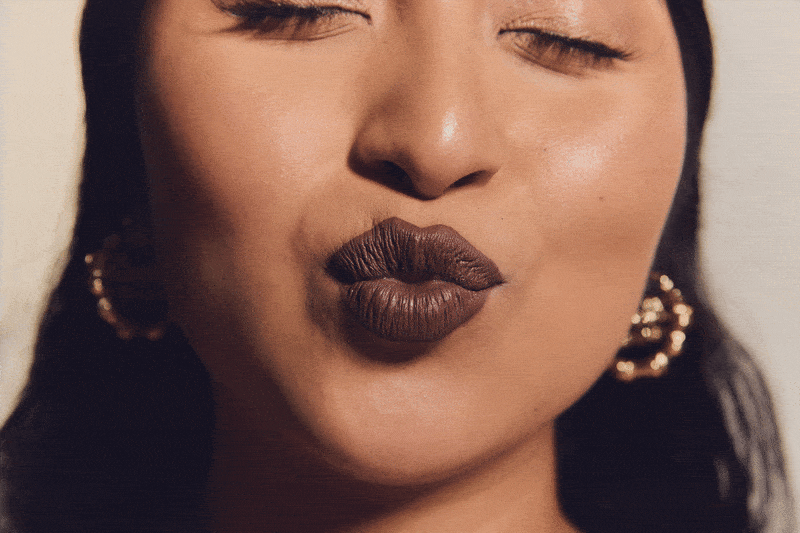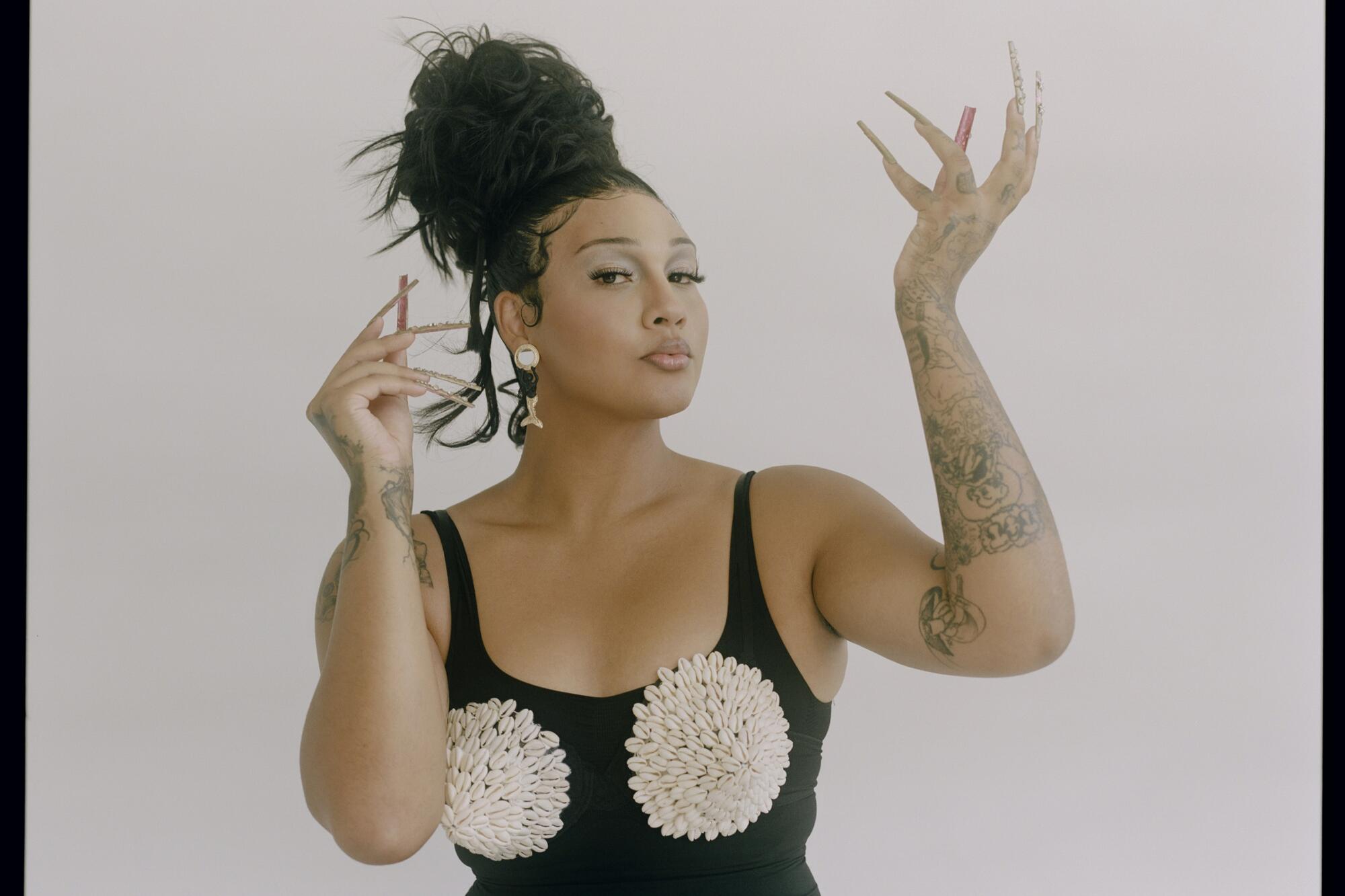
This story is part of Image issue 13, “Image Makers,” a celebration of the L.A. luminaries redefining the narrative possibilities of fashion. Read the whole issue here.
In one of my favorite images from her Instagram account, Bay Davis dazzles in a hot pink leopard jumpsuit, holding court outside of Randy’s Donuts in Inglewood, her platinum blond hair molded into a sculptural updo of buns and swoops and cascading inches. Her aesthetic is deliberately extravagant and rowdy. “I love being playful with the real world,” Davis says.
Born and raised in South L.A., Davis was a community organizer and poet before becoming a model. Her rising visibility as an Afro-Indigenous spoken-word performer six years ago led to features in magazines and occasional commercial work for companies like Soundcloud and Pandora. Though it began as a fun way to pay her bills, modeling took on a new urgency after she transitioned two years ago, becoming one way of taking up space as a Black trans woman.
“At the end of the day, my roots are in doing community work,” she says. She began organizing when she was 11 years old, after her father died in an interaction with the police. This loss compelled her toward action. She started engaging with folks door-to-door, at schools, at town meetings and bus stops, all in an effort to raise awareness about the school-to-prison pipeline. As she got older, she started writing poetry full-time, eventually founding an open-mic event, Porch Poetry.
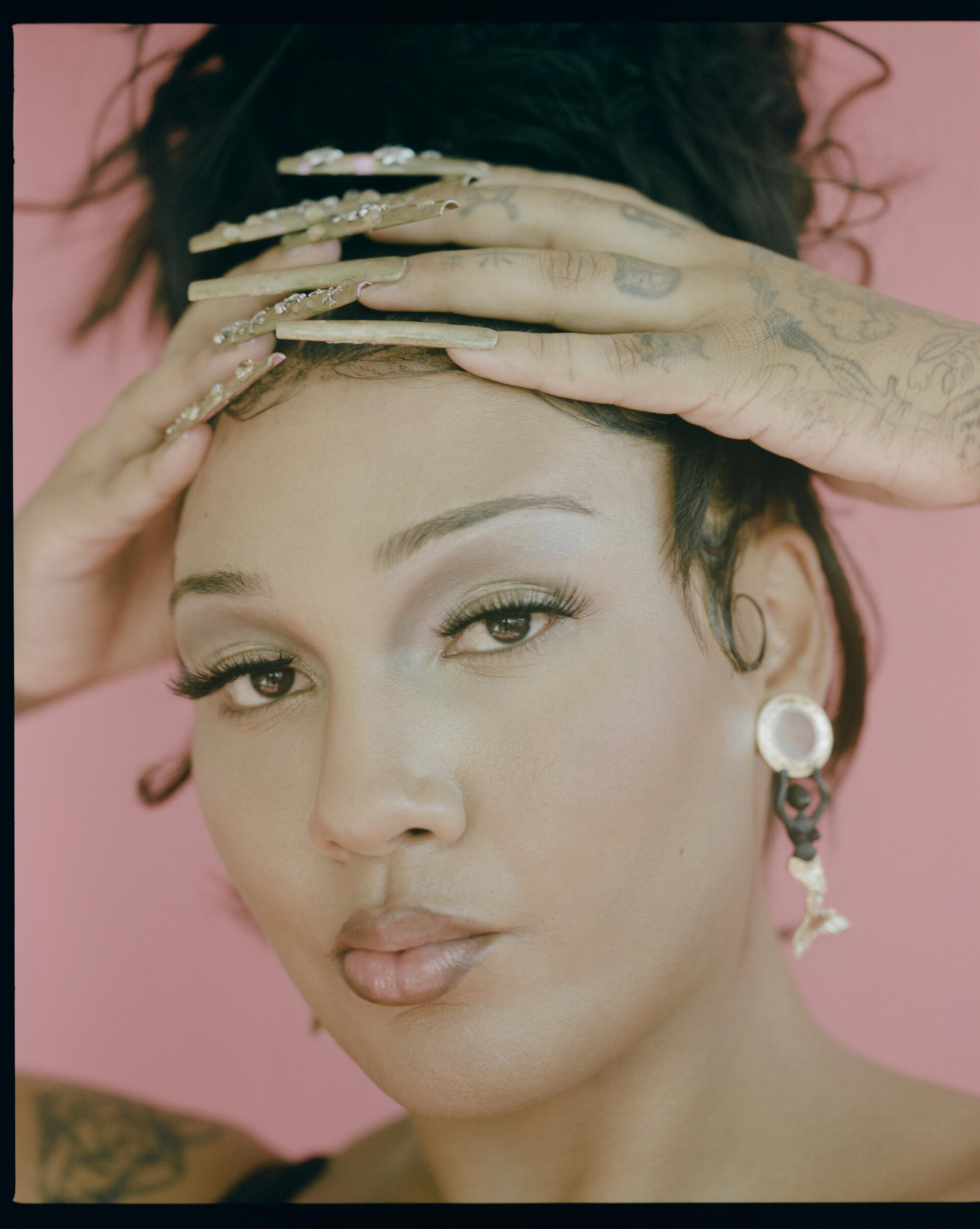
On the surface, modeling may seem unrelated to her past, but Davis treats it as another expression of her liberation practice: “It’s still a call to visibility and to taking up space and to being trans loudly.”
I talked to Davis about the women who shaped her style, what motivates her and the importance of advocating for yourself.
Through modeling, she’s breaking out of the identity she’s felt boxed into for the last two years — the organizer who was arrested and is still facing charges.
Allison Noelle Conner: Could you describe your journey to modeling?
Bay Davis: It was all very casual. I got random modeling jobs or little commercials that would actually really help [with paying rent]. So I think for a really long time, [modeling] wasn’t intentional. But once I transitioned, it became more intentional because I just could feel that I was getting less work and I wasn’t as palatable anymore, I guess. And that made me angry. I remember being really uncomfortable and kind of spiraling about it, like, what happens now? I’m not going to start losing jobs because I’m trans.
So I fought harder to be in those rooms and spaces, and to be like, “I’m still going to be here. You guys aren’t going to act like I’m invisible because I’m now visibly trans.”
ANC: How would you describe your approach to modeling?
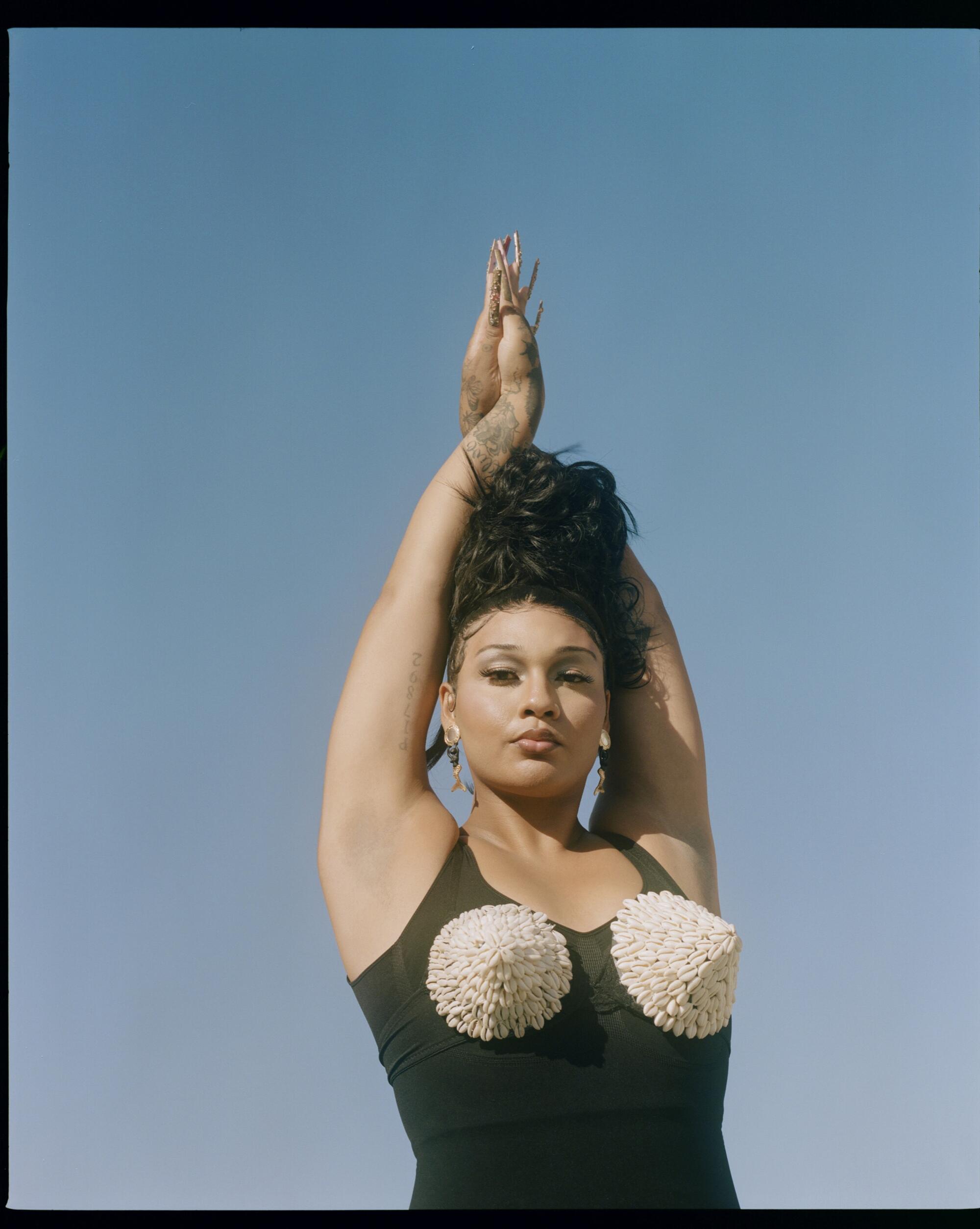
BD: I think one of my jobs as an artist, as a creative, as a poet, as a model, is to make my lived experience, but more specifically, my survival, I don’t want to say palatable, but tangible enough that folks can not only see themselves in my work and not only humanize other people like me — specifically thinking of other Black trans women — but also so that folks can use the same tools that I’ve been able to use for my survival. And all of that comes from my experiences of growing up in the ’hood and growing up in South Central.
ANC: How would you describe your personal style? What influences and lineages does your style reflect?
BD: My fits are always a call to all the women that raised me. It’s giving fat bamboos and obnoxiously long nails. I’m thinking about my tias, I’m thinking about my Tia Felicia, I’m thinking about my mom. Because I think all the women that raised me were the first real times that I saw myself. It was the first time that I saw really strong, just down-ass b—es. Just super radical women that probably wouldn’t have been called radical back then.
I’m also thinking about femme queen history, people like Octavia St. Laurent, who obviously I’ve never met. But I think those are also women that have shaped me a lot, from everything to how I walk to how I talk to how I engage with men. … Just all the things.
ANC: You’ve worked with big brands recently, from Adidas to Crocs to Yitty. What have those experiences been like?
BD: I think working with larger brands has been really affirming. Because all of those shoots have also been moments where I’ve curated the shoot from top to bottom, where I’ve done my styling, my hair, my face, my everything. And I think those partnerships were really affirming because I was getting paid what I should have been getting paid, one. But I was also being recognized publicly by an entity that was larger than myself.
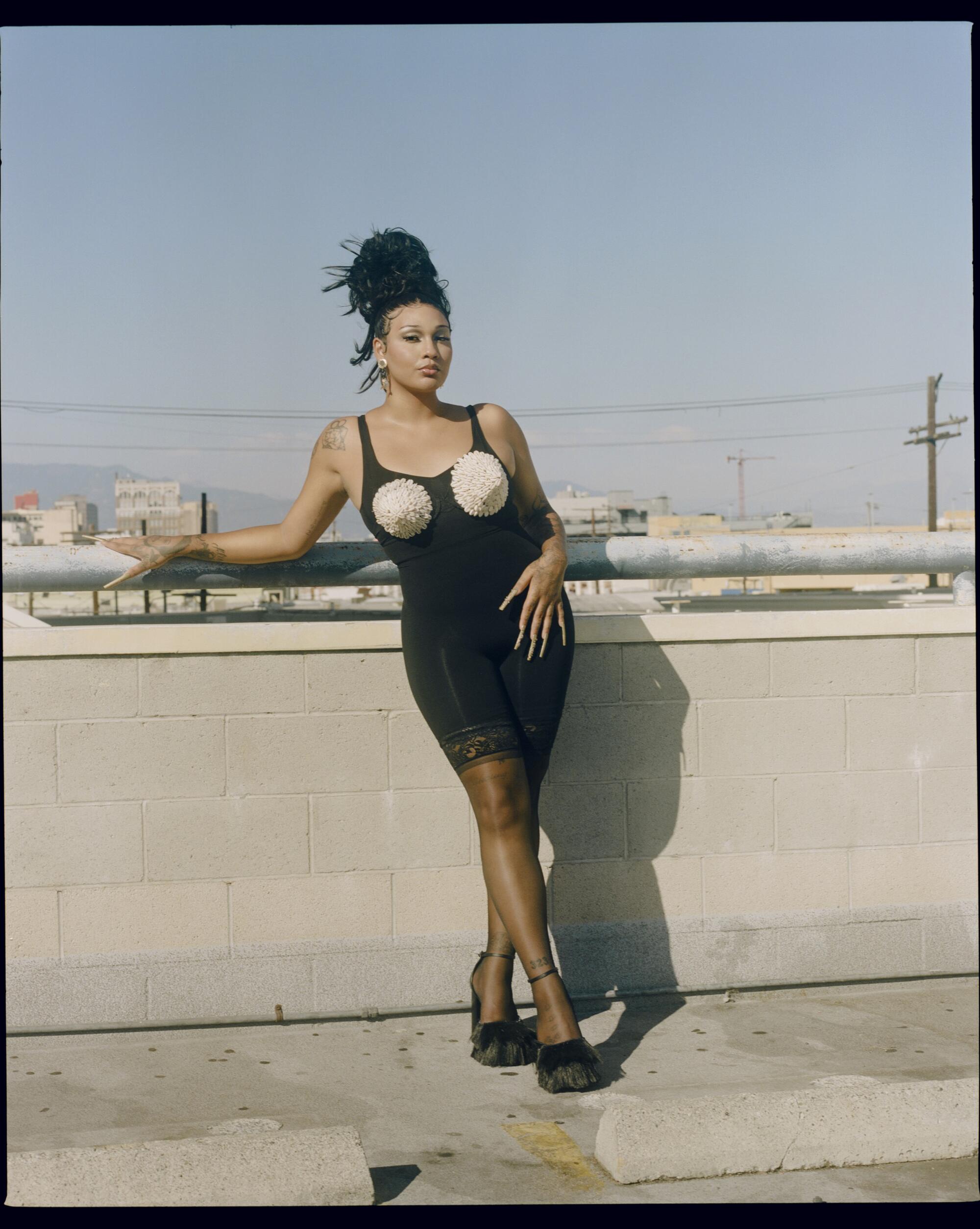
Flipside of that, it’s also incredibly affirming working with NorBlack NorWhite or Gypsy Sport, these very L.A.-based fashion brands, because that’s home. Both of those folks that run those spaces were my homies before we ever worked together. [T]hese are all people that I see at the club. These are all people that I see at the rallies. These are all people that I break bread with, for real.
ANC: What’s one thing you’ve had to learn as a model?
BD: I had to learn how to be vocal. It’ll happen often that I’ll be in spaces, and if makeup, hair and styling and all of the other things are being led by whatever company [that] has hired me, a lot of times, they don’t know what to do with my body or with my hair or with my face. There are certain things that I know work for me that other cis people just don’t because they’re cis.
And so, I think it was really important for me to feel strong enough to be able to walk onto a set and advocate [for myself].
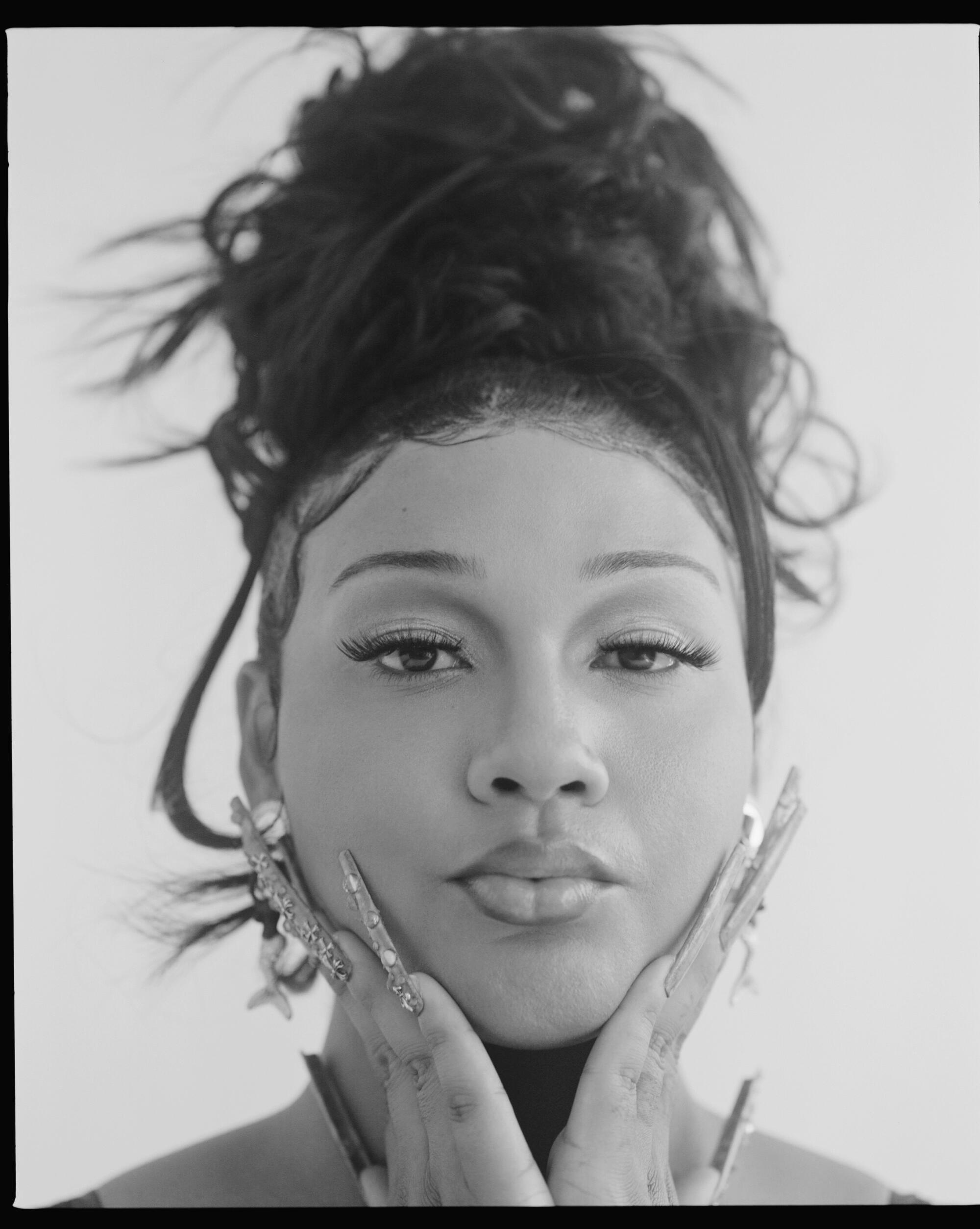
ANC: What’s the most exciting thing about modeling?
BD: My favorite part of modeling is the moment in between shooting — when I’m out in the real world, like, fully done, head to toe, and I just look better than everyone. My favorite thing is walking down the street and obviously not belonging to wherever I am and ignoring men and playing in people’s faces and being really extra and running across the street in super high heels. I love to disrupt space. I love a challenge. Like, you thought you were having a wholesome brunch, and then here comes this huge-ass trans woman that’s like 6’2”, that looks really f—ing good. Like, you could never do it.
Allison Noelle Conner is an arts and culture writer based in Los Angeles. Her writing has appeared in Artsy, Carla, East of Borneo, Hyperallergic, KCET Artbound and elsewhere.
Lettering design by Vivi Naranjo/For The Times; typeface: Goliagolia

More stories from Image
